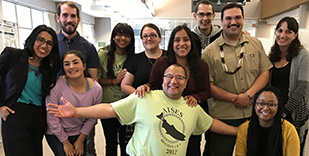Preview

Publication Date
2018
Abstract
The effects of forest plantation management on soil microbial biomass and functional diversity can often be significant, but little is known about changes over time. We conducted a study to observe the long-term effects of management strategies used in the Southeastern Tree Research and Education Site (SETRES). This well-characterized site is a loblolly pine (Pinus taeda) stand composed of 4 treatments: control, irrigated, fertilized, and both irrigated and fertilized. Microbial biomass and functional diversity were first measured at this site throughout the early-mid 1990’s where a significant increase in microbial biomass C and N was observed in the fertilized plots while irrigation had no effect. The use of irrigation in this study was subsequently terminated in 2010. Microbial biomass was quantified with the chloroform fumigation extraction technique for total C and N. We used Biolog EcoPlates™ and FF microplates™ to quantify both bacterial and fungal microbial functional diversity, respectively. By reevaluating the effects of these management strategies exactly 20 years later we can assess the long-term effects of fertilization and irrigation in a predominately sandy soil. Carbon source utilization was similar across treatments indicating that fertilization and irrigation did not have long-term impacts on functional diversity. In contrast to the prior study at SETRES, microbial biomass did not differ among treatments. Understanding the soil biological impacts of intensive management in plantation forestry may help us understand long-term nutrient cycling potential. The SETRES site is scheduled for harvest, and future research projects will evaluate the changes to the microbial community.
Research Experience for Undergraduates (REU) Scholarship
1
Recognition
NCSU Undergraduate Research Symposium Summer 2018, Basic and Environmental Soil Science Training REU Symposium 2018, Society of American Foresters National Convention 2018

